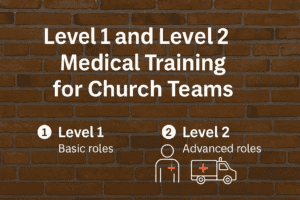Safety audits play a crucial role in the development and improvement of safety policies and protocols in schools.
In Texas, safety audits are required to be conducted on school facilities at least once every three years, as mandated by Texas Education Code 37.108.
These audits are overseen by the Texas School Safety Center (TxSSC) to ensure that schools maintain a safe and secure environment for students, staff, and faculty.
The impact of safety audits on Texas school policies is substantial, as the audits serve as an essential tool for identifying potential vulnerabilities and areas of improvement within a school’s safety protocols.
By addressing these vulnerabilities, schools can enhance their security measures, adopt new strategies, and refine existing policies to better protect everyone on campus.
Additionally, the TxSSC assists schools by providing resources and support throughout the audit process, enabling them to develop more comprehensive and effective safety plans.
Legislative Framework
Texas Education Code
The Texas Education Code establishes requirements and regulations for school safety and security, as well as the responsibilities of the Texas Education Agency and local school districts.
For instance, the code mandates that school districts conduct safety and security audits of their facilities every three years.
These audits provide valuable insights for developing and modifying school safety policies and protocols.
Furthermore, the Texas Education Code provides guidelines on school safety policies, including directives for having a coordinated effort between school administrators, the board of trustees, and relevant stakeholders in ensuring a safe learning environment.
By complying with these legislations, schools can maintain proper safety standards and adapt to changes in safety needs.
Local Law Enforcement
In addition to the Texas Education Code, local law enforcement agencies play a crucial role in shaping and implementing school safety policies and protocols.
Collaboration between schools and local law enforcement provides an opportunity to enhance safety practices, share resources, and address specific issues that may arise within the school community.
This partnership ensures that the safety policies are up-to-date with the latest trends and threats, and that schools receive the necessary support for their implementation.
In summary, the legislative framework involving the Texas Education Code and the collaboration with local law enforcement establishes a sound basis for school safety policies and protocols.
By adhering to these guidelines and maintaining open communication, Texas schools can strive for a safe learning environment for their students and staff.
Safety Audits and Their Role
TXSSC and Security Audits
The Texas School Safety Center (TxSSC) plays a crucial role in ensuring the safety and security of schools in Texas.
They are responsible for developing safety and security audit guidelines, as mandated by the Texas Education Code (TEC) 37.108 (b).
These guidelines help schools and districts assess their safety and security processes and facilities through security audits.
By conducting these audits, schools can identify areas of improvement and develop strategies to enhance safety on their campuses.
Improvement and Emergency Operations Plans
Safety audits often lead to the creation or updating of a school’s Emergency Operations Plan (EOP) or Multi-Hazard Emergency Operations Plan.
These plans outline the protocols and procedures in place to handle various emergencies, including natural disasters, violent incidents, and other threats to student and staff safety.
The insights gained from safety and security audits are invaluable in designing effective emergency operations plans that address potential vulnerabilities and ensure that schools are doing their best to protect their inhabitants.
Safety and Security Audit Results
Following an audit, schools must report their results to the Texas School Safety Center, as required by the Texas Education Code.
This information is used to track trends and identify areas in which school safety policies and procedures can be improved.
By sharing results, schools can learn from the experiences of others, refining their safety and security measures and fostering a commitment to continuous improvement.
The School Safety and Security Audit Toolkit aids schools in navigating this process, providing resources like the District Audit Reporting Tool and guidance for establishing a School Safety and Security Committee.
By reviewing audit reports, schools can make data-driven decisions, implement best practices, and stay up-to-date on current security trends in order to provide the safest environment possible for students, staff, and visitors.
The Audit Process
Audit Teams and Cycle
The Texas School Safety Center (TxSSC) requires school districts to have an audit team conduct safety and security audits of their facilities at least once every three years.
The audit cycle aims to identify and address potential threats, vulnerabilities, and weak access points in school campuses, ensuring the safety of students, staff, and visitors.
The audit team usually consists of trained professionals who thoroughly assess various aspects of facility safety and security, including access control and emergency response procedures.
Access Control Procedures and Facilities
Audit teams pay special attention to access control procedures and facilities to minimize unauthorized access to campuses.
During the audit process, they evaluate the effectiveness of existing access control systems, such as visitor management, identification badges, surveillance cameras, and door locks.
The audit teams also assess the security of entry and exit points, identifying any weak points or areas that require improvements.
Creating a culture of constant vigilance is critical to maintaining effective access control measures and ensures that potential threats are detected and addressed in a timely manner.
Data Collection and Report Writing
The audit teams collect a range of data using various methods, such as surveys and on-site inspections, to evaluate the effectiveness of safety and security policies implemented by the schools.
The data gathered provide valuable insights into the strengths and weaknesses of existing security measures, helping schools identify areas that need improvement.
Once the audit is complete, the team compiles a written report detailing their observations and recommendations.
This report serves as a valuable resource for school administrators and policymakers in making informed decisions to enhance safety and security on campuses.
By keeping the lines of communication open with stakeholders, schools can foster a collaborative environment where all parties work together to implement effective safety measures and continually improve the overall safety culture.
Governance and Implementation
Roles of Superintendents and School Districts
The implementation of safety audits in Texas schools starts with the roles and responsibilities of superintendents and school districts.
Superintendents, as the leaders of local education agencies (LEAs), are responsible for ensuring that their respective school districts comply with state safety audit requirements outlined in the Texas Education Code 37.108.
These requirements mandate that school districts conduct safety and security audits of their facilities at least once every three years.
In addition to overseeing the audit process, superintendents and school districts must also develop and implement comprehensive safety policies and protocols.
These policies should be based on the findings of the safety audits, addressing any issues or vulnerabilities that were identified.
Furthermore, superintendents must also ensure that any necessary training for staff and students is provided, equipping them with the skills and knowledge to respond effectively in emergency situations.
Collaboration with Charter Schools and Public Schools
Collaboration between charter schools and public schools is essential for understanding and implementing effective safety measures across the state.
Both types of institutions are required to participate in safety audits, and the information gathered from these audits can be used to assess the effectiveness of policies and practices in all schools.
By sharing their safety audit findings, charter schools and public schools can come together to identify common threats and vulnerabilities, allowing them to establish best practices and standards for safety.
Furthermore, collaboration encourages the sharing of resources, such as training materials or expert guidance, which can improve the overall preparedness of schools in Texas.
In conclusion, the impact of safety audits on Texas school policies is largely determined by the governance and implementation efforts of superintendents, school districts, and the collaboration between charter and public schools.
Through these efforts, schools can identify and address safety concerns, ensuring an optimal learning environment for all students.
Intruder Assessment and Response

Random Intruder Detection Audits
As part of the safety audits in Texas schools, the Random Intruder Detection Audits (RIDA) play a crucial role in ensuring the safety of the students and the school staff.
The purpose of these audits is to detect vulnerable access points and identify areas of improvement in school security procedures.
In response to a directive from Governor Greg Abbott in June 2022, the Texas School Safety Center (TxSSC) has been facilitating these types of audits across school campuses in Texas 1.
During an intruder assessment, 1-2 individuals unknown to the school or facility serve as intruders, with local law enforcement being informed of the exercise, but school-based staff and law enforcement remaining unaware 2.
This method allows the audit to closely mimic a real-life scenario and test the preparedness of the school in case of an actual breach.
Active Threat Plans
In addition to the RIDA, Texas schools are required to develop and follow an Active Threat Plan as part of their Multi-Hazard Emergency Operations Plans (EOPs).
The Active Threat Plan outlines the procedures and protocols to be followed in case of an emergency, such as a lockdown, and includes guidelines for unannounced drills.
Active Threat Plans help schools to efficiently respond to incidents similar to the tragic Uvalde school shooting.
By having a plan in place, schools can minimize the risk of accidents and ensure they are well-prepared to respond appropriately.
Threat Assessment Teams
Another crucial component of safety audits is the formation of Threat Assessment Teams.
These teams consist of multidisciplinary members responsible for identifying, assessing, and managing potential threats within the school environment.
By performing comprehensive threat assessments, these teams help ensure that the school’s safety policies and protocols address specific concerns, contributing to a safer environment for students and staff.
In conclusion, the implementation of safety audits, incorporating Random Intruder Detection Audits, Active Threat Plans, and Threat Assessment Teams, enables Texas schools to identify their vulnerabilities and make necessary improvements to their safety protocols, ensuring the well-being of everyone on campus.
Footnotes
Mitigation Strategies
Building Access Points and Door Locks
Mitigation strategies for enhancing safety in Texas schools begin with evaluating the building access points and door locks.
Schools should conduct periodic self-assessments and audits to identify vulnerabilities and ensure compliance with Texas school security laws.
Exterior door locks should be maintained, with regular reviews of their functionality.
Many schools have adopted locked instruction room door policies to ensure that only authorized personnel can access their facilities during emergencies or critical incidents.
Visitor Check-In Rules and Staff Training
Another area in which schools can improve safety is by establishing strict visitor check-in rules.
Schools should implement a well-documented process for visitors to sign in, present identification, and receive authorization to enter the premises.
This information should be included in both the student and staff handbooks, which are essential tools for setting safety guidelines and expectations in the school environment.
Additionally, it is crucial to provide regular staff training and updates on building access points, door locks, and visitor management.
Such training should be conducted during entrance and exit conferences to ensure proper understanding and compliance.
School-Based Law Enforcement and Jurisdiction
Working closely with school-based law enforcement officers is another critical component of mitigation strategies for school safety policies.
Texas schools should establish partnerships with local law enforcement agencies to address jurisdiction issues and facilitate swift responses to incidents on school property.
Coordination and communication between schools and law enforcement can lead to better data collection and evaluation of security policies.
In conclusion, Texas schools can significantly improve school safety by focusing on updating and enforcing building access points, door lock maintenance, visitor check-in rules, staff training, and forging strong relationships with local law enforcement agencies.
By conducting regular safety audits and evaluations, schools can better adapt their policies and procedures to meet the evolving challenges of maintaining a secure learning environment for all students and staff.
State and Society Involvement
Gov. Greg Abbott and Legislative Initiatives
In recent years, Texas has undertaken various efforts to enhance school safety.
Governor Greg Abbott has been instrumental in driving these initiatives, refining the state’s approach to addressing potential threats and vulnerabilities within schools.
In 2019, lawmakers passed a package of school security laws that gave the Texas School Safety Center the authority to audit school districts’ emergency operations plans.
These random audits aim to make sure that schools continuously uphold safety standards and improve their preparedness in the face of potential crises.
Education Advocates
Education advocates play a crucial role in shaping safety audit policies and improving the overall school environment.
They provide valuable input on current methods and suggest practical solutions that can be implemented.
Their efforts heighten awareness of the importance of school safety and contribute to establishing a safe learning environment that benefits both students and staff.
The Role of Associations and Unions
Notable associations taking an active part in discussions about safety audits and school policies include the Texas State Teachers Association (TSTA) and the Association of Texas Professional Educators (ATPE).
These organizations work to support their members and communities by advocating for safer, more nurturing learning spaces.
TSTA spokesperson Clay Robison asserts the importance of maintaining open communication between teachers and administrators when addressing safety matters.
Shannon Holmes, the ATPE Executive Director, emphasizes that the organization is committed to ensuring safety for all children within the education system.
By investing in safety audit improvements, associations, and unions provide a framework for schools to be more proactive in their approach to safety.
These entities create a collective voice that supports ongoing progress and holds all stakeholders accountable for delivering high-quality education in a secure environment.
Frequently Asked Questions
What factors do safety audits evaluate in Texas schools?
Safety audits in Texas schools evaluate a variety of factors, including adherence to access control, visitor management procedures, and the overall safety and security of school facilities. The Texas School Safety Center (TxSSC) requires that districts conduct and report the results of safety and security audits at least once every three years.
How have safety audits improved school policies in Texas?
Safety audits have led to significant improvements in school policies by identifying potential vulnerabilities and providing recommendations to address them. Audits help schools prioritize the necessary measures for enhancing safety and security, leading to better preparedness, prevention, and response plans in the event of an emergency.
What recommendations do school safety audits typically provide?
School safety audits typically provide recommendations that focus on improving access control, visitor management, and ensuring staff and students are well-trained in emergency response procedures. Audits may also suggest improvements to building infrastructure, such as improved lighting, secure doors, and surveillance cameras.
How can safety audits enhance the overall security of Texas schools?
Safety audits can enhance the overall security of Texas schools by identifying areas of weakness and offering recommendations to address them. The audit process also ensures that schools maintain compliance with the Texas Education Code, leading to a more secure learning environment for students, staff, and visitors.
What are some common findings from Texas school safety audits?
Common findings from Texas school safety audits include inadequate access control, insufficient visitor management procedures, and the need for staff training in emergency response protocols. The results of these audits provide valuable insights for school administrators to improve their safety and security measures.
How are Texas schools held accountable for implementing audit recommendations?
Texas schools are held accountable by reporting the results of their safety and security audits to the Texas School Safety Center. The TxSSC collects this information and works alongside schools to ensure the recommended improvements are implemented effectively, promoting a safer and more secure learning environment.
Is your school as safe as it could be? Risk Strategy Group can help you find out. Our expert consultants are all certified by the Texas School Safety and Security Consultant Registry and are skilled in conducting comprehensive safety and security audits.
We can identify potential vulnerabilities, offer actionable recommendations, and help you implement robust security measures. Don’t wait for a crisis to reveal the gaps in your school’s safety plan. Contact Risk Strategy Group today and let’s ensure your school is a safe learning environment for everyone.








